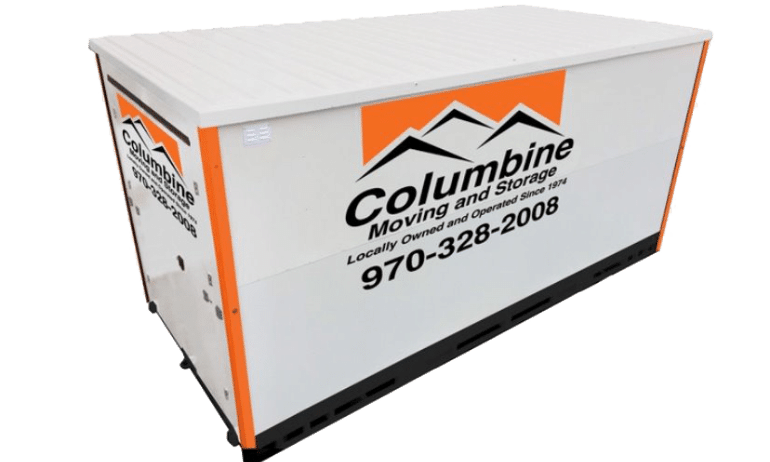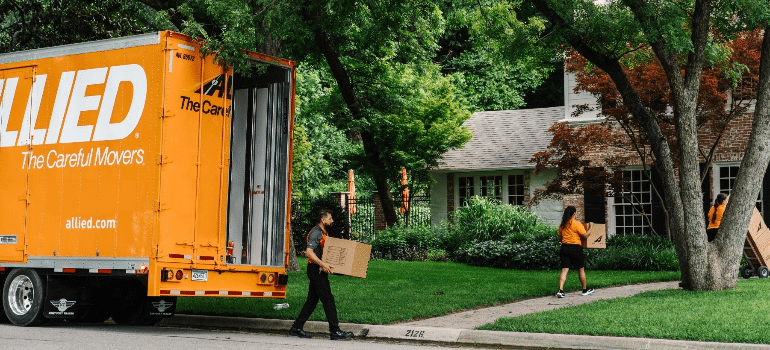Just how long has the major moving van lines been around? Most have been around for almost 100 years, which is astonishing when you compare this to other industries that existed in the late 19th century and early 20th century; however, they have taken for granted the mere fact that people must move and have relied on this need for their survival. Due to this customer dependency, there has been very little innovation in service offerings and the industry in general has become very complacent. Although the mode of transportation has evolved from horse-and-buggy, to train, and now to commercial vehicles, national van lines still offer the same style moving services as they did when first founded.
The rise of innovative companies
New innovative companies have entered the moving and storage space, starting to impact the market share that major van lines have enjoyed for decades. What happens to major corporations when new, creative companies disrupt existing markets? Look no further than Polaroid, US Steel, Blockbuster, K-Mart, Sears, Bed Bath & Beyond, Macy’s, and many more—once household staples, now bankrupt because they failed to see the opportunities their competition seized. These companies lacked the culture and talent to drive the change, creativity, and innovation desired by the most important stakeholder—the CUSTOMER.

The only lasting benefit from these companies is that serve as great case studies for academia.
You can buy innovation as part of an acquisition strategy, but if it’s not organic and ingrained in the company culture, it will not be sustained. Without this foundation, creativity and the empowerment of employees at various levels of the organization to implement and drive change will be lacking. If the national van lines remain complacent, they will also become part of history as new competition is moving in (no pun intended) and changing the landscape of the moving and storage industry.
Competition from non-conventional movers
The major van lines have seen companies such as PODS, U-Pack, Pack-Rat and Units enter the moving and storage industry and slowly pull away market share that only a hand-full of companies owned. These new non-conventional moving companies are offering superior services at more affordable prices. Their services are more convenient as well as more flexible than that of the traditional moving companies. I know this firsthand as we are an agent for Allied Van Lines who has also invested in portable storage. We can compare and contrast our service offerings and see that portable storage is in greater demand due to the convenience, flexibility and affordability desired by most of our customers, and also generates the highest return on investment.
Take a look at a company known worldwide for their innovation, Amazon. Amazon has completely changed the landscape of ecommerce and b2b business. Other blue-chip companies such as Walmart and Target could have sat on the sidelines and watched as Amazon took over the retail market, however, they adjusted their service offerings to compete with the convenience and flexibility of the on-line shopping experience that Amazon rolled out.

Evaluating the franchise business model
Company success or failure cannot be just about technology and process efficiency, but you must pull the layers back and evaluate the business structure and business partnerships of organizations. Excluding a couple companies, the portable storage industry has tried to grow by utilizing the franchise business model. Unfortunately, this is what continues to hold back the growth of this segment in the moving and storage industry. The franchise business model works for companies that have significant brand recognition, but there is only one portable storage company that has gained that national recognition, although many claim to have it. Most portable storage operators choose to remain independent rather than join a franchise because the cost of investing in such franchises doesn’t justify the significantly diluted returns.
Franchises also sell that they are offering a turn-key business model to compensate for investors’ lack of entrepreneurship; however, you can pay for third-party expertise in areas where you are deficient without paying steep franchise fees and continued royalties. Additionally, most of the franchises recommend spending an additional 5% to 10% of gross revenue on local marketing. So, what is the benefit of these franchises if you also have to spend significant cashflow to establish the franchise brand in your local market while giving up 10% in royalty fees? Isn’t this what the franchise is selling, brand recognition? The portable storage business model is very simple and there are thousands of independent portable storage operators around the United States that are very successful and retain 100% of their cashflow.
Independent operators: A better business model
The portable storage franchise model is not going to take over the market once dominated by the national van lines, due to the poor returns offered to investors. This explains why conventional moving companies have not been put out of business to date. It is only a matter of time when investors create the right business model that will attract existing independent portable storage companies or facilitate the establishment of new ones that compete against the conventional van line moving companies.
If you think that portable storage is not impacting the national van lines, look no further than SIRVA, the parent company of Allied Van Lines and North American Van Lines. SIRVA recently staved off a credit crisis as reported by Moody’s and S&P, due to being highly levered, with declining operating cash flow. A recipe that has resulted in bankruptcy for many companies before them.
Exploring alternative business models
If the franchise business model is not attracting portable storage investors, what would be an attractive business model? In order to answer the question and determine the best business model, you need to first ask what service do you want to offer that you currently are not able to provide. For existing portable storage operators, that service would be interstate moving. Most independent portable storage companies operate only in their local market or in surrounding states. To be competitive in interstate moving, you must have associated companies in most metropolitan cities around the nation. The more connections around the nation allows for seamless transportation and logistics, and this is why most portable storage franchises have not been able to crack the code for dominating this space.
The opportunity for portable storage companies to increase revenue/profits is significant if they can find the right business model that rewards business owners while offering customers more affordable, convenient and flexible services.

The principal/agent business model
One business model that might work and is utilized by most major van lines is the principal/agent model. The principal/agent business model requires little investment by agents, especially if they are already in the business. The agent is responsible for selling services that the principal is responsible for. The agent captures revenue for booking the service, and the principal captures revenue for their responsibility over scheduling, logistics, valuation and back-office functions. In addition, the principal is responsible for marketing the services offered and sold by agents.
Will major van lines survive?
Given the principal/agent business model could be utilized by the major van lines to attract new agents in the portable storage industry, why aren’t they? It’s simple, they are lacking the creative and innovative individuals at the top of the organizations that can push this mindset throughout the rest of the organization. For independent portable storage companies, there is nothing to lose, but there is significant business that can be gained and shared with the national van lines. If we do not see a change soon, the moving van lines will likely become extinct as they are devoured by the competition.
Patrick Pelton, CPA
Columbine Moving & Storage
